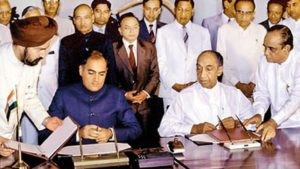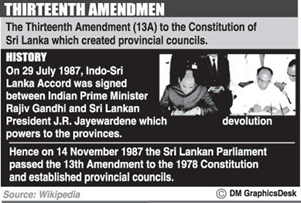Free Courses Sale ends Soon, Get It Now


Free Courses Sale ends Soon, Get It Now



Disclaimer: Copyright infringement not intended.
Context
Background
The beginning
Indian involvement
Peace Accord
Reaction
Crux: The Indo-Sri Lanka Accord of 1987

What about the 13th Amendment’s implementation?
|
PRACTICE QUESTION Q. Indian intervention in Sri Lankan civil war became inevitable as that civil war threatened India's "unity, national interest, and territorial integrity." And a post-LTTE look at the fallout of the 1987 agreement led to India's direct involvement in the counter-insurgency operation in Sri Lanka. Discuss. |
© 2024 iasgyan. All right reserved